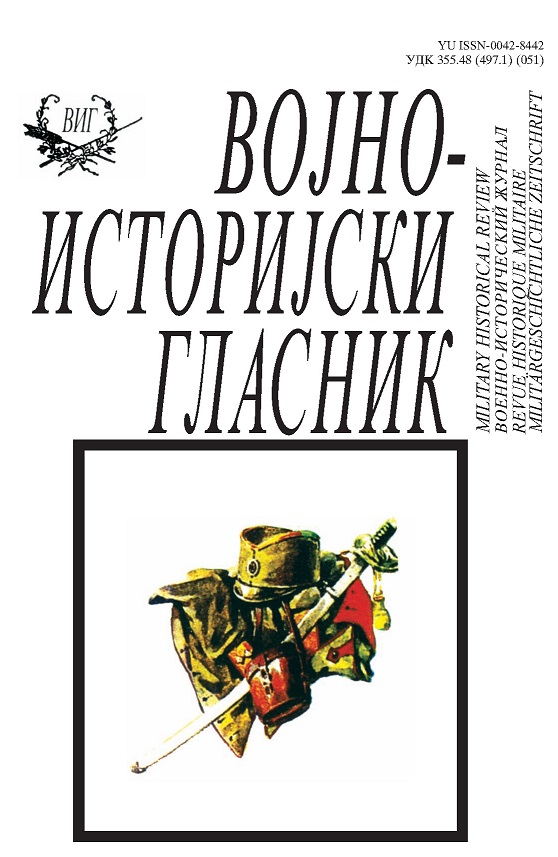Југословенско искуство са мултиетничком армијом, са посебним освртом на Босну и Херцеговину
The Yugoslav Experience with a Multiethnic Army, Particularly in Bosnia and Herzegovina
Author(s): Mile BjelajacSubject(s): Governance, Military history, Political history, Military policy, Social differentiation, Inter-Ethnic Relations
Published by: Institut za strategijska istraživanja
Keywords: International Criminal Tribunal for the former Yugoslavia (ICTY); Bosnia and Herzegovina; Yugoslav Peoples Army; soldiers; officers; multiethnic army;
Summary/Abstract: During the last two decades, this issue has been frequently discussed and written about, both in academic articles and in the International Criminal Tribunal for the former Yugoslavia (ICTY) in The Hague. Experts in the prosecutors’ and defense office as well as historians discussed it. Even though many claimed that “The Great Serbia” project started at the beginning of the 1980s through perfidious cooperation between the Serbian political elite and the Yugoslav Peoples Army (YPA) and led to war and destruction, the ICTY itself gave up on that part of President Milosevic’s indictment on August 25, 2005 due to evidence that proved the opposite. Yugoslavia’s breakdown and subsequent wars enabled the natural development of a historiography related to civil-military relations within Yugoslav history and an examination of the interaction between the Army and society. Historians remain divided. One side has tried to prove that Yugoslavia was a bad experience for “their” people, while the other, under pressure not to be labeled as “unacceptable”, continued to objectively perceive the reality of the state which lasted for 73 years. Under the united state, all citizens of Bosnia and Herzegovina were equally involved in all segments of defense. The most powerful Territorial Defense formation in Socialist Federative Republic of Yugoslavia (SFRY) was established in this republic during the 1970s. Bosnia and Herzegovina evolved from an undeveloped Turkish and Austro-Hungarian province to become the central strategic zone in the new state and that fact had specific consequences for development in general. As many new roads were built and railways extended in the Kingdom of Yugoslavia before the war as after 1945. Heavy industry rose in Zenica, capacities were extended in Vareš, mines were opened, and electrical power plants built. One of the largest military industrial complexes to produce ammunition and top gun pipes was built near Sarajevo just before WWII; it also produced clothes and other military products. After 1945 factories in Sarajevo were renovated and expanded, with new ones built in Bugojno, Goražde, Konjic, Vitez, Travnik, Banja Luka, Mostar etc. Part of the production was transferred from Serbia to Bosnia in 1945. The YPA and its construction firms built airports, 11 housing areas for 10,000 workers, schools, administrative buildings and institutions. In B&H there were 11,000 employees in 1949. By 1985 130,000 apartments were built. The YPA was active in the construction of a water supply system in many cities and settlements. During the 1980s, 23.83% of B&H’s income on average was foreign currency income that came from industrial military exports (or $1.131 billion in the period 1986-1990). The military medical and veterinarian service was actively involved in monitoring dangerous endemic contagious diseases. As far as we know, shortly before the civil war and while planning a military coup d’état as a solution for the crisis, the YPA acted alone, independent of nationally-oriented parties. It wanted to cooperate with and guide Nijaz Duraković’s reformed communists. They hesitated and, ultimately, refused the offer. The YPA was unprepared for Yugoslavia’s breakdown and the consequences of the Western countries’ recognition of B&H’s independence. The most important losses were installed industrial capacities and individual strategic infrastructure, as well as war reserves’ storehouses. The most important military industrial firms and war storehouses were based in territories where Muslims and Croats were in the majority, so were completely or partially surrounded and under the control of paramilitary formations of these two nations. At the time of the breakup, all finished products in the factories were worth $704 million, together with reserves of $1.650 mil. The Headquarters’ order to withdraw that capital came late. The Presidency of the SFRY (rump Presidency) decided that Serbian, Montenegrin and Macedonian officers and soldiers of the YPA should be withdrawn from Bosnia and Herzegovina and that its citizens, mainly Serbs, should return to their native republic. At the end, after the recognition of B&H’s independence, the YPA’s units and institutions included only 15% of members from other republics of the former SFRY.
Journal: Vojnoistorijski glasnik
- Issue Year: 2008
- Issue No: 2
- Page Range: 70-93
- Page Count: 24
- Language: Serbian

